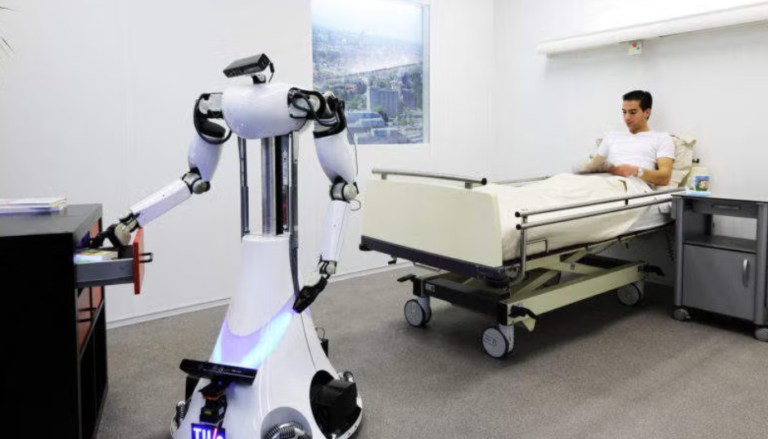How Robotics Is Revolutionizing Manufacturing
Robotics is fundamentally transforming the manufacturing landscape. By automating processes, firms achieve significant gains in efficiency and productivity. Operational costs decline as robots assume repetitive tasks, allowing human workers to focus on higher-level functions. Additionally, enhanced safety measures and quality control protocols arise from robotic integration. As the industry adapts, the workforce dynamic shifts, prompting a need to reassess skills and roles. This evolution raises critical questions about the future of human labor in manufacturing.
Enhancing Efficiency and Productivity
In recent years, a significant number of manufacturing sectors have adopted robotics to enhance efficiency and productivity.
The integration of automated processes within smart factories has enabled real-time monitoring and optimization of operations.
These advancements facilitate reduced cycle times and improved output quality, empowering manufacturers to respond swiftly to market demands while achieving greater flexibility and precision in production methodologies.
See also: How Renewable Energy Tech Is Reshaping Our World
Reducing Operational Costs
As manufacturers increasingly implement robotics in their operations, they frequently observe a notable reduction in operational costs.
Robotic automation streamlines processes, minimizes labor expenses, and enhances resource utilization. This technology facilitates significant cost savings by reducing downtime and improving production efficiency.
Consequently, organizations can allocate financial resources more effectively, fostering innovation and growth while maintaining competitive advantages in the manufacturing sector.
Improving Safety and Quality Control
The integration of robotics in manufacturing significantly enhances safety and quality control across various processes.
Through robotic inspections, manufacturers can achieve higher accuracy in identifying defects, minimizing risks associated with human error.
Additionally, automated compliance systems ensure adherence to industry standards, promoting consistent quality outputs.
This technological advancement not only safeguards personnel but also elevates product reliability, ultimately fostering greater consumer trust.
Shaping the Future Workforce
While the rise of robotics in manufacturing brings numerous efficiencies, it also necessitates a fundamental shift in workforce dynamics.
Skill development emerges as a priority, enabling workers to adapt to evolving technologies.
Job transformation is inevitable, as traditional roles evolve towards oversight and collaboration with robotic systems.
This shift promotes a workforce that is agile, innovative, and prepared for a technologically driven future.
Conclusion
In conclusion, robotics serves as the backbone of modern manufacturing, orchestrating a symphony of efficiency, cost reduction, and quality enhancement. As industries embrace automated solutions, they cultivate a workforce adept at harmonizing human and machine capabilities. This transformation is akin to the industrial revolution’s steam engine, propelling manufacturing into a new era characterized by precision and reliability. Ultimately, the integration of robotics not only reshapes operational paradigms but also paves the way for sustainable industrial advancements.



